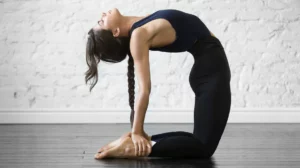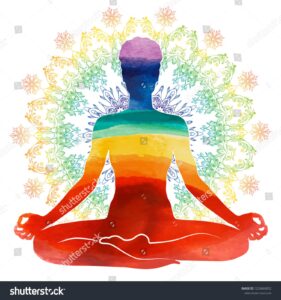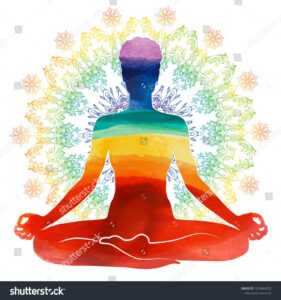While all those yoga poses can seem intimidating at first, it’s actually a very approachable form of exercise. Yoga is more than just a physical practice with complete program of how to live in the world,” yoga is derived from the Sanskrit word Yuji, which means to yoke or bind. “Understanding the definition helps us understand that the experience of yoga is one of connection, referring to the union of our own body and mind. In this manner, yoga is an organic technique of helping us keep our mind and body in the same place at the same time.”
Read this full article with PK Halder and get knowledge about yoga.
Mental and physical positivity
We become sensitized to the feelings that arise—both physical and emotional—during a yoga session and develop an awareness of the thoughts in our mind. When we do this simultaneously, our heart opens and our mind calms down, and we live our lives with more grace and positivity in a very natural and easy manner
Physical Benefits of Yoga

Helps improve chronic low-back pain
If you work at a desk (or couch) all day, you may be experiencing some low back, shoulder, and neck pain due to poor posture. “Yoga improves posture, which can prevent low-back pain, as well as shoulder and neck pain,” Yoga promotes low-back pain relief in two ways: First, the meditation techniques used in yoga encourages relaxation from the physical discomfort related to chronic low-back pain
Builds body awareness
When you ground your body to hold all the poses, you recruit a bunch of both big and small muscles. Yoga also focuses on proper form—you need to activate the right muscles—which creates a better understanding of how your muscles, joints, and tissues work together. This can help ensure you move safely. Yoga is an alignment-based practice. We learn to stack and align joints to most efficiently utilize our muscles and release active energy. “More importantly, it builds awareness in our bodies so that we can participate in our lives with more physical freedom and less discomfort.”
Fights fatigue
When you move—like by doing some yoga stretches during the day—your heart pumps more oxygen-rich blood to the muscles and organs in your body. This can help reduce fatigue and tiredness, according to the International Sports Science Association.
Eases you into regular exercise
If you’re new to exercise—or are easing back into a workout routine after a break—vigorous exercise may not seem to be the most appealing. That’s why many people looking to get started exercising turn to yoga: It’s a low-impact workout that’s easy on the joints, is accessible for most fitness levels, and requires no special equipment
Helps your heart health
Yoga has shown some promising benefits for improving cardiovascular disease risk, by lowering heart rate, blood pressure, and even cholesterol. It’s likely due to both the physical aspects of yoga as well as the focus on breath. That’s because yoga trains the vague nerve, which is the main nerve that directs the parasympathetic nervous system—the part of the nervous system responsible for lowering heart rate and promoting relaxation—to be more responsive to your breath.
Mental Benefits of Yoga

Improves your mood
No type of exercise can “cure” mental health conditions like anxiety and depression—and it can be annoying to be told to “just work out” if you’re dealing with them. But the combination of gentle movement and focused breathing may have some mental health benefits, meaning yoga may play a role in how you feel if you experience those conditions.
Helps your mind relax
Whether you’re doing a few Cat-Cow flows or lying down in Sav asana, yoga turns on your relaxation response. By focusing on your breathing and releasing tension in your muscles and joints through the poses, you’ll usher in a sense of calm. Relaxation is a valuable skill that you can train. Yoga is a movement modality that helps to quiet your mind. You might focus your attention on moving with precision or timing your movement with your breath in order to keep your mind focused on what is happening now. It is a great way to get out of your head and into your body.
Provides a calm “end” to your workout
After a tough workout, cooling down with a quick yoga stretch could help loosen up your muscles and ease your mind out of that high-intensity mindset. Remember by focusing on your breath, you’re activating your parasympathetic nervous system, which reminds your body and mind that you’re done with your workout—and that it’s now time to relax.
Improves focus
Holding a yoga pose correctly takes a combination of concentration and endurance: You need focus to move your body into the pose, and stamina to keep it there for that set amount of time. This combination not only helps your yoga performance, but it can also help you sharpen your mental focus on other stressful situations in your everyday life, too.
Cultivates resilience
While yoga activates your body’s relaxation response, it isn’t always a walk in the park. Performing twists, binds, and inversions in yoga poses can help you learn how to sit with discomfort and embrace it. But challenging as they may be, there’s an end to each pose, and a new one that comes behind it.
Thus, yoga teaches us the natural rhythms of life. When you are uncomfortable, you learn to sit with discomfort because you know it will pass. When you are joyful and want to hold onto something, you learn to let it go because things inevitably change.”
References












sbQFHZih